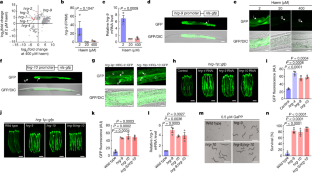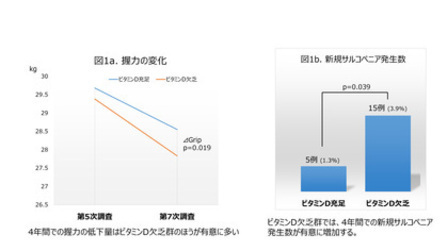2022-10-21 ジョージア工科大学
ヘムとは、血液を赤色にする鉄分を保持する分子で、生命維持に不可欠なものです。しかし、皮肉なことに、適切に取り扱わなければ、かなりの毒性を持つことになる。実際、さまざまな癌から循環器系疾患まで、多くの疾患はヘムのホメオスタシスの欠陥に関連している。
ヘムがどのように生合成され、分解されるかは何十年も前から知られていたが、ヘムが合成部位や貯蔵部位から細胞内で使用されるためにどのように動員されるかは、これまで明らかにされていなかった。ジョージア工科大学の研究者らは、生体内でヘムを画像化、モニタリング、プローブ化する新しい手法とツールを開発し、細胞毒性をもつこの重要な代謝産物を生物がどのように扱っているかを研究した。この研究成果は、『Nature』誌に掲載されています。
浙江大学およびメリーランド大学医学部との共同研究により、研究チームはこれまで知られていなかったタンパク質HRG-9(別名TANGO2)を発見し、このタンパク質がヘムを合成または貯蔵場所から代謝に利用するために動員するのに役立っていることを明らかにしました。ヘムを生体内で利用できるようにする新しいタンパク質の発見は、多くの疾患において新たな治療ターゲットとなる可能性がある。すなわち、ヘムを制限し、この必須栄養素を細胞から奪い、あるいはヘムが過剰に蓄積して細胞に対して毒性を示すようにすることである。
TANGO2遺伝子の変異は、発達遅延や代謝異常を特徴とする遺伝性疾患の原因となるため、TANGO2がヘムのホメオスタシスに関与していることは、ヘムを中心とした治療法の開発により、こうした疾患を治療できる可能性を示唆している。
<関連情報>
- https://research.gatech.edu/researchers-target-tango2-study-iron-rich-blood-molecule
- https://www.nature.com/articles/s41586-022-05347-z
HRG-9ホモログはヘム濃縮コンパートメントからのヘム輸送を制御する HRG-9 homologues regulate haem trafficking from haem-enriched compartments
Fengxiu Sun,Zhenzhen Zhao,Mathilda M. Willoughby,Shuaiqi Shen,Yu Zhou,Yiyan Shao,Jing Kang,Yongtian Chen,Mengying Chen,Xiaojing Yuan,Iqbal Hamza,Amit R. Reddi & Caiyong Chen
Nature Published:19 October 2022
DOI:https://doi.org/10.1038/s41586-022-05347-z

Abstract
Haem is an iron-containing tetrapyrrole that is critical for a variety of cellular and physiological processes1,2,3. Haem binding proteins are present in almost all cellular compartments, but the molecular mechanisms that regulate the transport and use of haem within the cell remain poorly understood2,3. Here we show that haem-responsive gene 9 (HRG-9) (also known as transport and Golgi organization 2 (TANGO2)) is an evolutionarily conserved haem chaperone with a crucial role in trafficking haem out of haem storage or synthesis sites in eukaryotic cells. Loss of Caenorhabditis elegans hrg-9 and its paralogue hrg-10 results in the accumulation of haem in lysosome-related organelles, the haem storage site in worms. Similarly, deletion of the hrg-9 homologue TANGO2 in yeast and mammalian cells induces haem overload in mitochondria, the site of haem synthesis. We demonstrate that TANGO2 binds haem and transfers it from cellular membranes to apo-haemoproteins. Notably, homozygous tango2-/- zebrafish larvae develop pleiotropic symptoms including encephalopathy, cardiac arrhythmia and myopathy, and die during early development. These defects partially resemble the symptoms of human TANGO2-related metabolic encephalopathy and arrhythmias, a hereditary disease caused by mutations in TANGO24,5,6,7,8. Thus, the identification of HRG-9 as an intracellular haem chaperone provides a biological basis for exploring the aetiology and treatment of TANGO2-related disorders.


